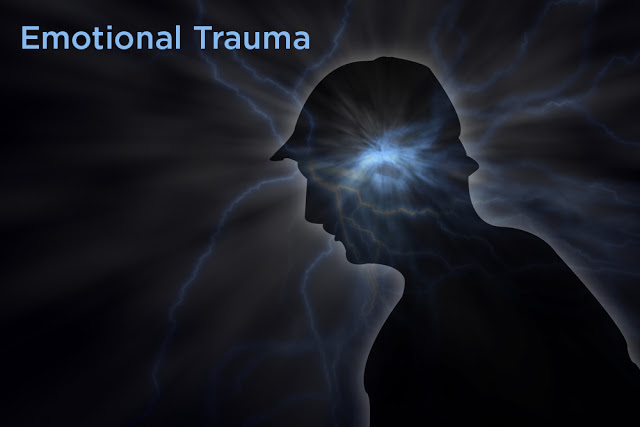Dr. Shelley Uram, a triple board-certified psychiatrist and Senior Fellow at The Meadows, was recently a guest on
The Dr. Drew podcast.
The podcast is hosted by Dr. Drew Pinsky, a board-certified internist
and addiction medicine specialist who is well known for his work both
as a physician and as a TV and radio personality. On The Dr. Drew
podcast, he takes listener calls and talks to experts on a variety of
topics relating to health, relationships, sex, and addiction.
He and Dr. Uram had a fascinating and in-depth conversation about
the ubiquity of relational trauma in today’s society, how trauma
impacts the brain and body, and treatment modalities like mindfulness,
yoga, EMDR, and Somatic Experiencing, and 12-step frameworks.
Here are a few highlights from the show:
On The Prevalence of Trauma in Our Culture
Dr. Drew: What are you seeing with trauma these days?
Dr. Uram:
There’s a lot of stress and strain and what I call relational trauma
that’s inherent to modern American culture... It often leads to
addiction, trauma, and depression.
The
ACEs study
showed us that when we’re children and we’re exposed to the stresses
and strains of family and psychological traumas— “soft” traumas that are
really not soft—they go on to create all kinds of psychological
problems, medical problems, heart problems, lower socioeconomic levels,
and more. So, those traumas we are exposed to as children and may not
even recognize as traumas can go on to wreak havoc in the body, the
brain, and the mind… I see that a lot.
On Unhealthy Relationship Patterns
Dr. Drew: People with traumas often seem to be
magically attracted to the kinds of people who have features or
qualities similar to the perpetrators of those traumas. And, of course,
if you are drawn to a perpetrator they will oblige you and
re-perpetrate. Where is your sense of where that’s coming from?
Dr. Uram: There’s a part of the brain called the
brain stem, which is located physically at the lowest level of the brain
and is evolutionally hundreds of millions of years of years old. Since
it’s so ancient it doesn’t have sophisticated wiring. In addition to
homeostasis, procedural memory is one of its functions. Procedural
memories are habits or patterns that get locked into our brains. Every
single function of the brain stem, including procedural memories, is
unconscious. So, when patterns get locked in there, we are no longer
aware of them. It’s like learning to tie your shoes. At first, it took a
lot of effort, but once you got it, you could do it without thinking.
So, how to tie your shoes is a procedural memory.
Procedural memories are also made up of any types of patterns that we
picked up from our formative years, mainly birth to age five. They can
be simple motor activities, like tying your shoes, or they can be tied
in with strong emotions, fears, and expectations. Once something gets
registered as a procedural memory, we’re off to the races. We’re going
to keep repeating procedures related to those early emotions and all we
can do is notice it. We have little to no control.
Another rule of thumb with the ancient brain areas like the brain
stem is that they like for us to stay in the zone of comfort. Even if we
consciously hate the zone of comfort we end up staying with it. So, for
a woman who has been abused as a child and ends up in abusive
relationships as an adult over and over and over—She may hate that she
does that, but to her ancient survival brain areas, that’s the zone of
comfort. That’s what it knows. It knows abuse. It knows neglect. It
knows perpetrators…
Dr. Drew: Some people can trust their so-called
instincts, but if you’ve had trauma… No. Or if you find that you repeat
behavior you don’t like, or repeating circumstances you don’t like or
relationships you don’t like—that’s when you can’t trust your instincts.
Dr. Uram: The real wisdom that we all have deep
inside of us tends to be a very quiet voice—most of us don’t hear it
all. But the voice of addiction, the voice of trauma, and the Fight,
Flight, Freeze voice screams at us… By the time most of are three months
old, our thinking brain has started to come online and we have our
first dawning sense of “Oh, there’s a me.” That triggers our flight,
fight, freeze survival responses like crazy. Especially if we are
exposed to trauma, the survival voices are screaming loud voices inside
our heads. They make us forget entirely how to listen to the quiet voice
inside of us that contains our sixth sense and our wisdom.
On The Essential Self
Dr. Uram: We all have a soul—an essential self that
we are born with and die with. It gives us our inherent sense of worth,
and our wisdom, and our sense of peace and happiness—real, deep
happiness… By the time we are young adults, most of us have long
forgotten who we really are, because layer upon layer of false beliefs,
expectations, symptoms, and negative feelings have built around our
essence. We have to learn how to reclaim the essential self—How to get
back down to that essential self and connect with it.
Learn more about The Essential Self and Trauma
Listen to the entire, hour-long podcast for more of Dr. Uram’s
conversation with Dr. Drew. They go into more depth about the essential
self, building interpersonal relationships, and the implications of
trauma and the ACEs study.
Dr. Uram’s book,
Essential Living: A Guide to Having Happiness and Peace by Reclaiming Your Essential Self is currently available for pre-order on Amazon.com. It will be available April 4 wherever books are sold.
Content Source 











